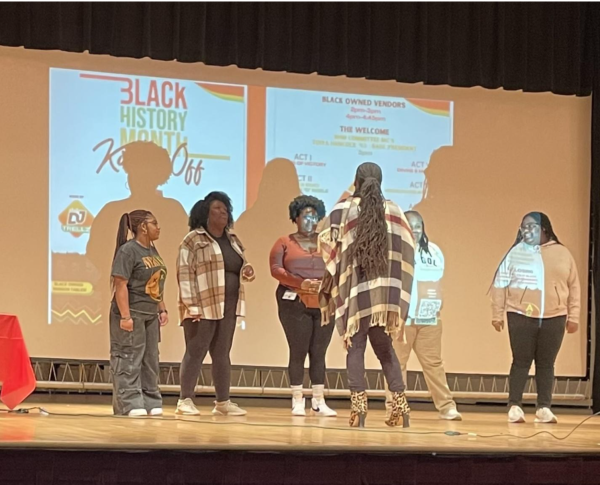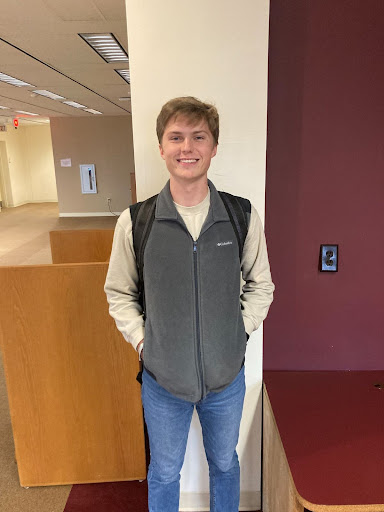Tours celebrate National Archives month
Quaker Archives celebrated National Archives month by offering three different tours between Tuesday, Oct. 30 and Wednesday, Oct. 31 of the documents that hold the history of Guilford and the Greensboro Quakers. The archives stored in Hege Library detail the events that have transpired since Guilford’s commencement. The collection ranges from registration cards with information about students who fell victim to the 1918 Spanish Influenza epidemic, to minutes from Quaker meetings, to textiles from the 1800s.
“We have the Quaker Records and college records which means we have the entire history of the college and the history of Quakers in the southeast all the way back to the 17th century,” said Tour Guide and Associate Archivist Elizabeth Cook.
The archives team gave the general public a chance to see pieces of the college’s past that they don’t usually have access to.
Cook showed attendees past editions of The Guilfordian, placing a particular focus on volumes from a century ago. In October of 1918, Guilford College contended with a flu pandemic. The period marked an era of struggle and uncertainty.
Guilford was dealing with financial difficulties, and men from the faculty and the student body were away at war. Former President of Guilford College Raymond Binford had just taken up his position in September, and was responsible for making sure the college was placed under quarantine along with the city of Greensboro. During this time, students were allowed to stay on campus, though they were not permitted to come and go.
With the help of Laura Worth, an 1892 Guilford graduate who was a certified nurse at the time, the quarantine was successful and there were no student fatalities. Registration cards from 1918 show that a total of 47 students became sick. Students were ill for periods ranging from six to 21 days, but all recovered.
“Greensboro Daily News,” which Cook referenced, was a local newspaper at the time that reported 650 cases of flu on Oct. 20. By Oct. 29, these numbers were up to 2,000 for the city of Winston-Salem. The number of sick seesawed back and forth until the resolution of the flu. In total, the flu pandemic killed up to 40 million worldwide and 13,000 in North Carolina.
Although these statistics may be available through historical records elsewhere, Quaker Archives provided students and community members with an opportunity to see how Guilford specifically was involved.
“I like that it’s an opportunity for people,” said Archives Assistant Beth Saunders. “We get asked through the year ‘can we go back there and see (the archives)?’ And we have to say no because things take special handling and they’re stored away where it’s not like people can browse. So I like this opportunity because it gives them a chance to actually see the stuff they were wanting to see.”
The last part of the tour took place upstairs by flashlight. This section of the tour boasted Quaker record books, textiles, portraits, artifacts, rare books and manuscripts.
Though the books have been rebound, each still includes its original pages. Some of these books contain information about alumni that is available on Ancestry.com. With this information available through the archives, Guilford is able to answer inquiries from potential descendants of Guilford alumni by tracing them through the college records.
“We get to see people come in and do that research,” said sophomore Anna Honer, who does her work-study in the Quaker Archives. “They come to us because we have the answers and can give them their family histories,”
Cook also went through the collection of portraits the archives team is gathering of Guilford’s past presidents and other significant community members, which included T. Gilbert Pearson. Pearson was a naturalist who came to Guilford in 1892, trading his bird and egg collection for tuition. Some of the specimens from his traded collection are still available in the Frank Family Science Center.
The tour concluded with a look at some Guilford-related costumes and clothing, including first-year beanies from the 60s, antique football jerseys, cleats and dresses. Each tells the story of a student past and is a piece of the larger puzzle of Guilford’s progression through the 181 years it has been open. The Quaker Archives team hopes to share the vast amount of information it holds by taking this journey back through Guilford’s history.
“The main point of these tours is publicity so that people know that we’re here and happy to help with research,” Cook said. “We want to promote awareness for the campus community of what is here, and the tours try to do that in a fun way.”








